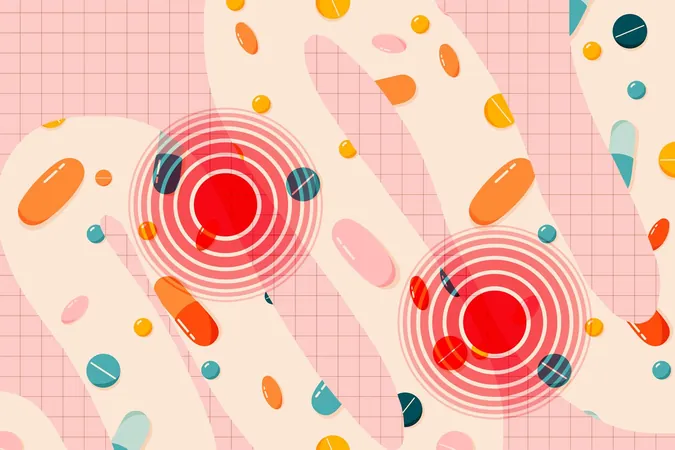
Unlocking the Secrets of Aging: The Surprising Science of Selectively Advantageous Instability
2025-05-24
Author: Yu
The Efficient Dance of Life
Life on Earth has often been celebrated for its incredible efficiency. From the meticulous hexagonal structures in honeybee hives to the slow, energy-conserving heart of a blue whale, it seems nature has optimized every aspect of existence. Yet, a deeper investigation reveals a fascinating paradox: instability plays a crucial role in biological systems.
Embracing Fragility: The Role of Selectively Advantageous Instability
Enter the concept of Selectively Advantageous Instability (SAI). Rather than being a design flaw, this idea posits that certain ephemeral components are essential for the longevity and adaptability of more extensive systems. When faced with harsh conditions or new evolution demands, a sprinkle of instability proves just as vital as efficiency.
Molecular Mechanisms of Aging
Within the microscopic world of cells, molecules come and go in rapid succession. Transcription factors—crucial proteins that activate genes—are among the fastest; they appear, do their job, and vanish in mere moments. This swift turnover is essential, allowing cells to react to stress and efficiently dispose of damaged components before they disrupt essential processes.
The Surprising Role of Telomeres and Aging
Telomeres, often likened to the plastic tips of shoelaces, play a critical role in cellular aging. They shrink with every cell division, leading cells to eventually retire or self-destruct. While this may seem bleak, it actually serves as a safeguard against uncontrolled mutations that can result in cancer. Moreover, the phenomenon of menopause illustrates this concept at the organism level. Women cease having children long before the end of their lives, hinting at a grandmothers’ effect where older generations enhance the survival chances of their grandchildren.
A Revolutionary Idea in Biology
John Tower, a molecular biologist at USC Dornsife, champions the notion that SAI should be recognized as a fundamental biological principle. Recently articulated in the journal Frontiers in Aging, Tower’s proposal highlights the intrinsic turnover of cellular components as a key to life’s resilience and adaptability.
The Benefits of Instability
At its core, SAI revolves around a simple but powerful idea: when a cell creates an unstable component, its state shifts once that component is destroyed. This dynamic allows both a normal gene and its mutated version to coexist, fostering diversity and enhancing survival chances within fluctuating environments. Adaptive responses in biology reveal that evolution favors systems that can pivot quickly in response to changing circumstances.
Beyond Biology: SAI in Society and Technology
This idea extends beyond just living organisms; it resonates within human social networks as well. The constant ebb and flow of friendships, business partnerships, and online communities reflects a similar cycle of formation and dissolution that encourages innovation and adaptability. Even in engineering, creators of artificial cells and self-replicating robots are starting to leverage instability deliberately, leading to more adaptive technological behaviors.
Conclusion: The Strength in Breaking Down to Build Up
While no single principle can encapsulate the full spectrum of life's complexities, SAI provides a striking new perspective. It suggests that fragility and the ability to discard worn-out components can be a superpower—enabling repair, growth, and evolution. Whether managing a molecular circuit or leading a team through change, embracing calculated instability can set the stage for resilience and adaptability in the face of life's unpredictabilities.
As the research continues to unfold, one thing remains clear: sometimes the key to thriving isn't just in holding everything together, but in allowing certain aspects to break and renew, repeatedly.



 Brasil (PT)
Brasil (PT)
 Canada (EN)
Canada (EN)
 Chile (ES)
Chile (ES)
 Česko (CS)
Česko (CS)
 대한민국 (KO)
대한민국 (KO)
 España (ES)
España (ES)
 France (FR)
France (FR)
 Hong Kong (EN)
Hong Kong (EN)
 Italia (IT)
Italia (IT)
 日本 (JA)
日本 (JA)
 Magyarország (HU)
Magyarország (HU)
 Norge (NO)
Norge (NO)
 Polska (PL)
Polska (PL)
 Schweiz (DE)
Schweiz (DE)
 Singapore (EN)
Singapore (EN)
 Sverige (SV)
Sverige (SV)
 Suomi (FI)
Suomi (FI)
 Türkiye (TR)
Türkiye (TR)
 الإمارات العربية المتحدة (AR)
الإمارات العربية المتحدة (AR)